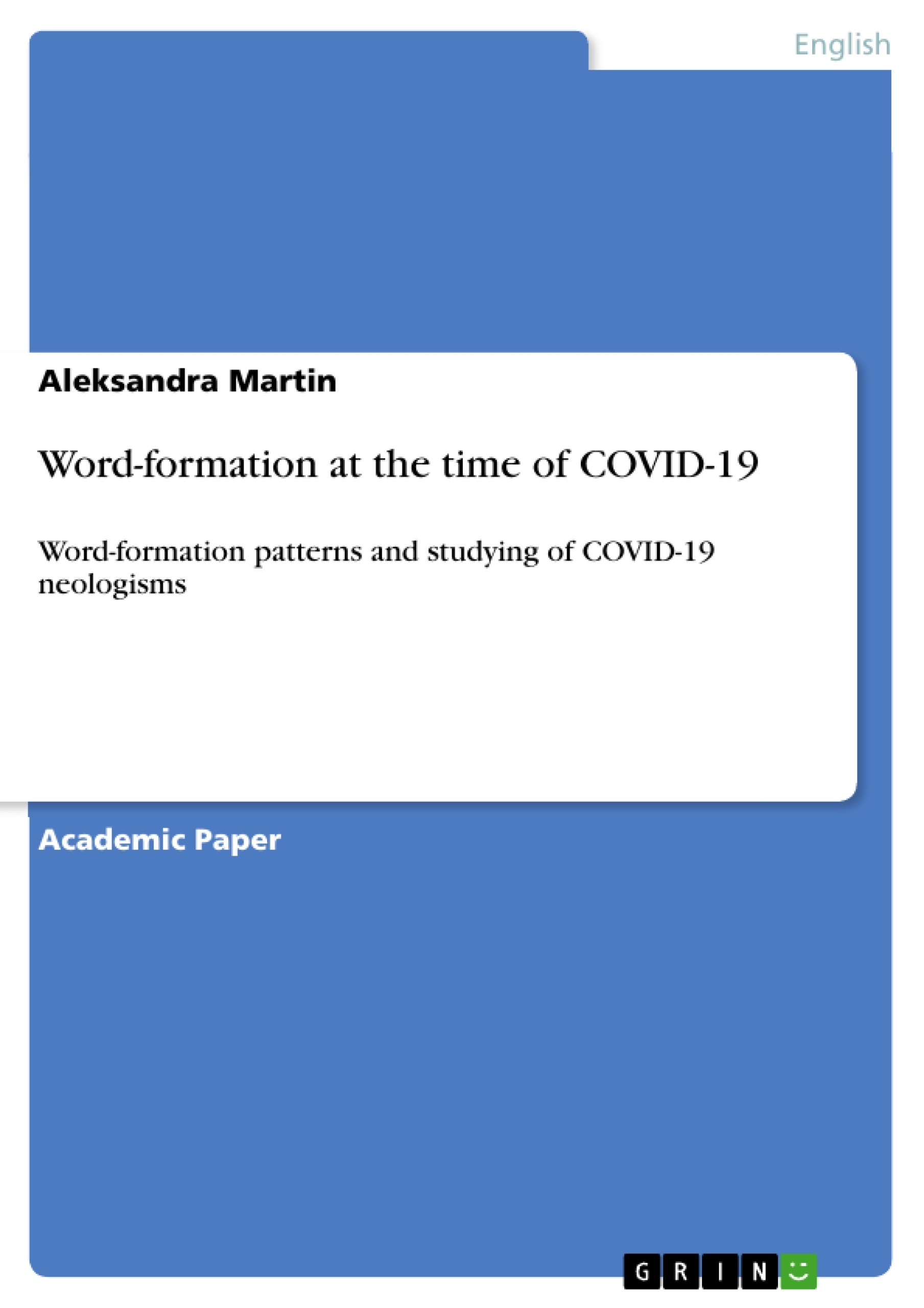The ongoing COVID-19 pandemic has caused a lot of changes in our everyday life which have also been reflected in the way we speak. New concepts and ideas needed to be named to find their place in the lexicon. It led to the emergence of many new words and expressions in the English language. Some of them aim at naming specific things like the new virus itself (i e COVID-19) while the others are examples of language creativity and wordplay, for example, the word cornteen imitating the American way of pronouncing the widely used word quarantine.
Currently, it is almost impossible to say which new words will get a permanent place in the vocabulary and which of them are just occasional coinages that will disappear once the pandemic is over. In order to answer this question, more time is needed but what is possible now is to trace the development of the English lexicon. For this purpose, the new COVID-19 words will have to be documented and analyzed. As the pandemic has not finished yet and other words can theoretically still be coined, multi-step research is required. This topic has already gained some attention from the scientific community, but there are only a few studies that analyze the new COVID-19 words. Having said that, the present study is aimed at contributing to the documentation and analysis of the new coinages.
Table of Contents
- Introduction
- What are 'new words'?
- Word-formation patterns
- Affixation
- Prefixation
- Suffixation
- Compounding
- Conversion
- Back-formation
- Clipping
- Acronyms and abbreviations
- Blending
- Loan words
- Onomatopoeia
- Multi-word expressions
- Studying of COVID-19 neologisms
- Methodology
- Collecting and analyzing data
- Limitations
- Results
- Conclusion
Objectives and Key Themes
This paper aims to document and analyze the new coinages that have emerged in the English language during the ongoing COVID-19 pandemic. The research investigates how these new words are formed, their usage, and their potential for long-term inclusion in the lexicon.- Word-formation patterns in the context of COVID-19 neologisms
- The impact of the pandemic on the English lexicon
- Methodology for collecting and analyzing COVID-19 related neologisms
- The evolution and persistence of new words in the language
- The significance of studying COVID-19 neologisms for linguistic research
Chapter Summaries
- Introduction: This chapter introduces the topic of COVID-19 neologisms, highlighting the impact of the pandemic on the English lexicon. It sets out the objectives of the research and provides a brief overview of the study's structure.
- What are 'new words'?: This chapter explores the concept of new words and the factors influencing their establishment in a language. It discusses various processes involved in word-formation, such as affixation, borrowing, and word creation.
- Word-formation patterns: This chapter delves into various word-formation patterns, including affixation, compounding, conversion, back-formation, clipping, acronyms, blending, loan words, onomatopoeia, and multi-word expressions. It provides examples and insights into how these patterns are employed to create new words.
- Studying of COVID-19 neologisms: This chapter focuses on the specific area of studying COVID-19 neologisms. It discusses the importance of documenting and analyzing these new words, highlighting their potential to contribute to our understanding of language change.
- Methodology: This chapter outlines the methodology used in the research, including the methods for collecting and analyzing data. It also discusses the limitations of the study.
- Results: This chapter presents the findings of the research, showcasing the results of the data analysis. It explores patterns of word-formation, the prevalence of different types of neologisms, and the overall impact of the pandemic on the English lexicon.
Keywords
This paper delves into the realm of neologisms and word-formation, particularly in the context of the COVID-19 pandemic. The research focuses on analyzing new words and expressions, exploring their creation, usage, and potential for linguistic persistence. Key areas of focus include the impact of the pandemic on language, the classification and analysis of word-formation patterns, and the role of neologisms in reflecting social and cultural change.- Quote paper
- Aleksandra Martin (Author), 2021, Word-formation at the time of COVID-19, Munich, GRIN Verlag, https://www.grin.com/document/1165467



